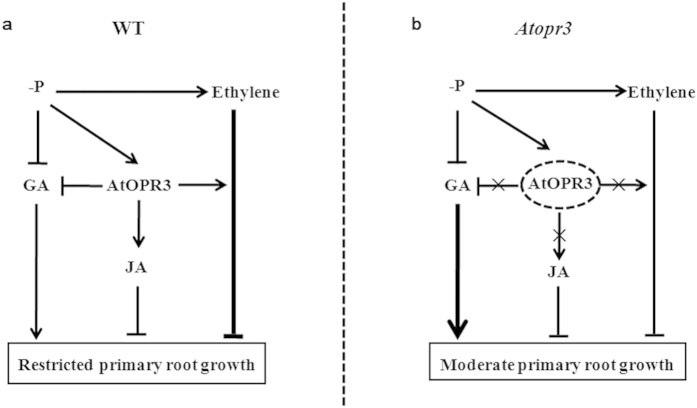Figure 6. A schematic model of how AtOPR3 regulates primary root growth under low P conditions, putatively via interacting with ethylene and GA signaling pathways in Arabidopsis.
When supplied with sufficient P, both WT and Atopr3 mutant plants show normal root growth due to absence of low P stress signals. (a) In the WT plants, AtOPR3 expression is stimulated by low P supply. Up-regulation of AtOPR3 causes three biological consequences: stimulation of JA biosynthesis, enhancement of ethylene signaling, and down-regulation of the bioactive GA content, which collectively suppresses primary root growth under P deficiency. (b) In AtOPR3 knockout mutant plants, absence of functional AtOPR3 transcripts blocks JA biosynthesis, reduces strength of P-stress directed ethylene signaling, and indirectly up-regulates the level of bioactive GA. All these alterations result in continuous primary root growth as a whole in spite of P limitation.

